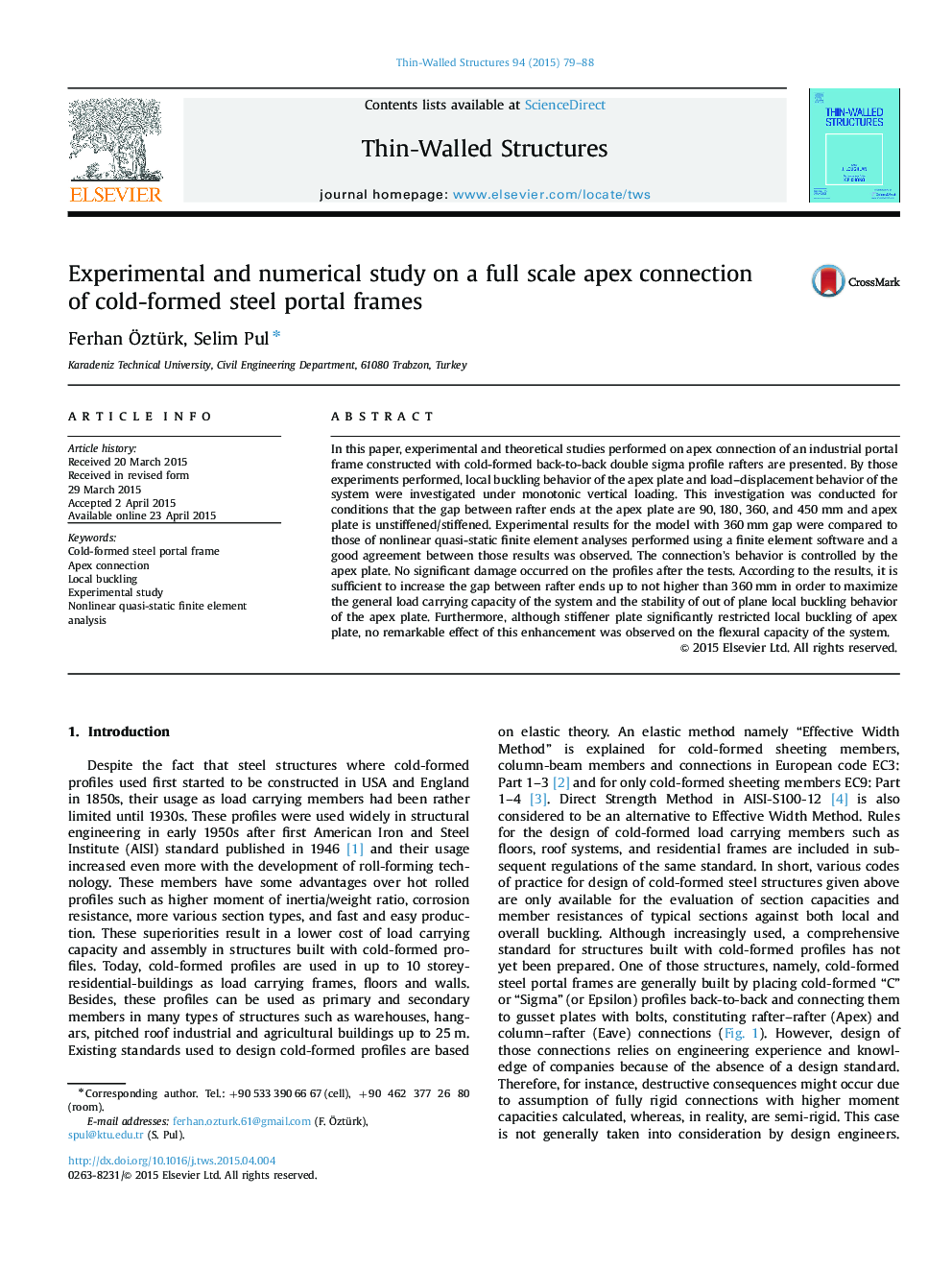| Article ID | Journal | Published Year | Pages | File Type |
|---|---|---|---|---|
| 308515 | Thin-Walled Structures | 2015 | 10 Pages |
•Two full-scale apex connection test specimens were manufactured and tested under monotonic loading.•They and other variants of connections analyzed with nonlinear FE modeling.•The increase in the gap between rafter ends results in an increase in flexural capacity.•Global behavior of apex connection is mainly determined by local bucklings.
In this paper, experimental and theoretical studies performed on apex connection of an industrial portal frame constructed with cold-formed back-to-back double sigma profile rafters are presented. By those experiments performed, local buckling behavior of the apex plate and load–displacement behavior of the system were investigated under monotonic vertical loading. This investigation was conducted for conditions that the gap between rafter ends at the apex plate are 90, 180, 360, and 450 mm and apex plate is unstiffened/stiffened. Experimental results for the model with 360 mm gap were compared to those of nonlinear quasi-static finite element analyses performed using a finite element software and a good agreement between those results was observed. The connection׳s behavior is controlled by the apex plate. No significant damage occurred on the profiles after the tests. According to the results, it is sufficient to increase the gap between rafter ends up to not higher than 360 mm in order to maximize the general load carrying capacity of the system and the stability of out of plane local buckling behavior of the apex plate. Furthermore, although stiffener plate significantly restricted local buckling of apex plate, no remarkable effect of this enhancement was observed on the flexural capacity of the system.
